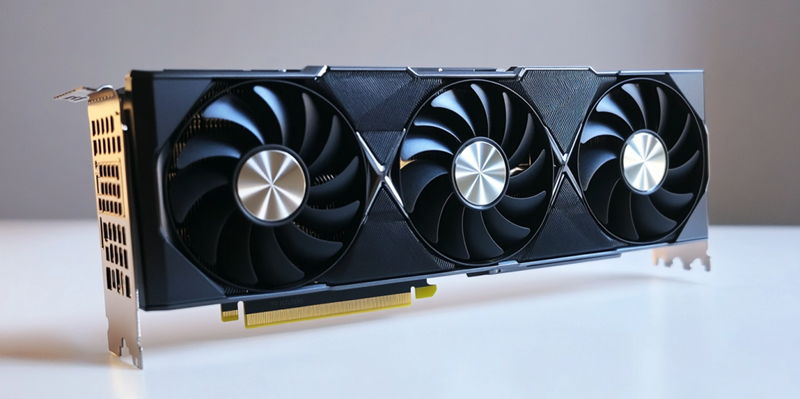The tech world is abuzz with anticipation as Nvidia’s long-awaited RTX 5090 and 5080 graphics cards are expected to be unveiled at CES 2025. This next-gen Blackwell series from Nvidia has generated significant interest, and gaming enthusiasts and professional users alike are eagerly waiting to see what these new GPUs will offer. Rumored to be released shortly after their unveiling, likely in late January 2025, Nvidia’s retail partners have already initiated initial shipment discussions, indicating an imminent launch on the horizon.
Price Concerns and Professional Targeting
One of the most talked-about aspects of the new RTX 5090 and 5080 GPUs is their anticipated pricing. Nvidia might label these products as ‘professional’ GPUs, which directly translates to significantly higher price points compared to the previous generation. Reports from sources close to Nvidia suggest potential price ranges that could see the RTX 5090 priced between $1,999 and $2,499. Even at the lower end of this range, it would amount to a staggering 25% price increase from the MSRP of its predecessor, the RTX 4090. This has sparked concerns among potential buyers, especially gamers, who have traditionally relied on Nvidia’s GeForce series for high-quality graphics performance at somewhat accessible prices.
The RTX 5080 is also expected to see a similar steep price increase, with speculations suggesting a range between $1,200 and $1,400. These price hikes indicate a significant shift in Nvidia’s marketing strategy, aiming to justify the higher costs by focusing on professional applications rather than solely catering to gamers. Retailers have been unofficially advised to convey that any GPU above the RTX 5070 Ti is primarily intended for professional use, rather than traditional gaming. This new direction could alienate a portion of Nvidia’s core audience, as many gamers may find the new price points prohibitive.
Implications for the Gaming Market
The potential shift in marketing strategy towards professional users and the subsequent price hikes have led to an important discussion regarding the impact on the gaming market. Nvidia’s GeForce brand has long been synonymous with top-tier gaming performance, offering graphics cards that deliver immersive gaming experiences. The possible alienation of gamers due to the increased costs is a pressing concern. With higher costs, these GPUs may become less accessible to the average consumer who builds or upgrades their gaming rig. This shift could drive a portion of the gaming community to explore alternative options from other manufacturers, potentially affecting Nvidia’s market share.
To mitigate this risk, Nvidia will need to clearly communicate the enhanced capabilities and benefits that justify the increased prices of the RTX 5090 and 5080. The speculation about these GPUs’ targeted professional features will need to be backed by substantial advancements and technological improvements that set them apart from gaming-focused predecessors. Performance benchmarks, efficiency improvements, and additional professional-oriented capabilities will be scrutinized closely by both potential professional buyers and traditional gaming audiences.
Unified Understanding and Final Speculations
The tech community is buzzing with excitement as Nvidia prepares to reveal its highly anticipated RTX 5090 and 5080 graphics cards at CES 2025. This next-generation Blackwell series has sparked a lot of interest among gamers and professional users who are eager to see the capabilities of these new GPUs. The buzz around these cards is growing, with many speculating on the performance enhancements and new features they will bring to the table.
The GPUs are rumored to be released shortly after their CES unveiling, possibly by the end of January 2025. Nvidia’s retail partners are already discussing initial shipments, suggesting the launch is imminent. Expectations are high for these graphics cards to set new standards in the industry. The anticipation isn’t just idle chatter; the tech world is eager to see if the RTX 5090 and 5080 will live up to the hype and offer groundbreaking improvements in performance and efficiency for both gaming and professional applications.
With CES being one of the largest tech events of the year, all eyes will be on Nvidia to see how these new GPUs perform in comparison to their predecessors and competitors.

